|
Bronzecasting following the "lost wax method"
To make a waxmodel from a statue (indirect method) we use silicon molds. In these molds the wax is poored (hollow or massive), in this way you can become a waxmodel from a statue of stone, clay or other material.
Is the statue already made in wax, it is not always neccessary to make a silicon mold. In that case we speak of the direct method.
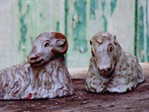 |
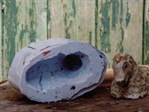 |
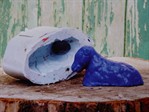 |
The original models: Ceramic Sheep
|
A Silicon mold |
The (hollow) waxmodel from the mold |
The (hollow) waxmodel gets a casting tap, casting channels and air channels before being formed into a second mold. This mold goes in the oven for 3 days at ± 700 ° C. In this contramold the bronze is casted.
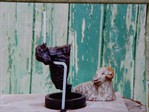 |
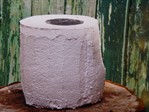 |
 |
|
the waxmodel with casting tap,
casting channels and air channels
|
the second mold which
goes into the oven
|
after braking the mold and being
cleaned with water this is the result
|
When the bronze is casted, the molds are broken, the bronze is being cleaned with water and the chasing of the rough bronze statues begins. The casting tap, the casting channels and the air channels are sowed of, holes are welded, and the casting skin is brushed. Also polishing a statue or a part of it can be part of the process. The last phase is the colouring or patination of the bronze. We do this by heating the statue and bring on different kinds of sours (a.o. ironchlorid, coppernitrate, zwavellever, salpetersour).
This colouring can also be done with "cold patina".
 |
 |
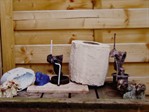 |
| chased |
coloured |
the process from start to finish |
|